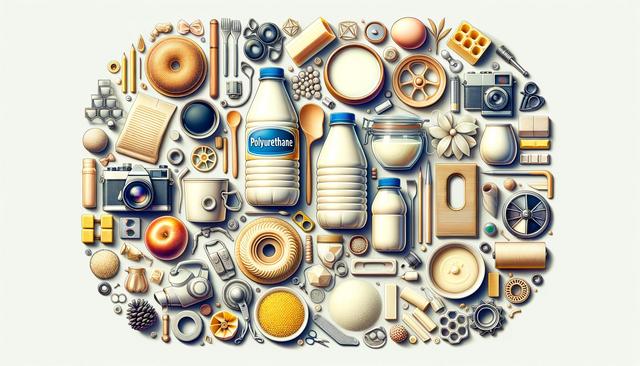Understanding PU Components and Their Composition
PU Component refers to architectural and structural elements made from polyurethane, a versatile polymer material. Polyurethane is engineered to meet various performance standards, making it suitable for both structural and decorative applications in modern construction. These components are widely used due to their unique combination of physical and chemical properties, allowing them to serve as reliable alternatives to traditional building materials.
Polyurethane used in PU components can be formulated to exhibit different densities and flexibilities depending on the functional requirements. This adaptability makes it possible to produce lightweight yet durable elements such as moldings, cornices, beams, and even exterior panels. These features are especially beneficial in projects where reducing structural load is essential, or where specific design aesthetics need to be achieved without compromising on material strength.
Key advantages of PU components include:
- Design flexibility for complex shapes and textures
- High resistance to moisture and pests
- Low thermal conductivity for insulation purposes
- Ease of customization and finishing
As a result, PU components are increasingly being adopted across both residential and commercial sectors as a reliable building material and one of the preferred decoration materials.
Performance Benefits in Modern Construction
In today’s construction practices, the performance characteristics of materials play a significant role in project planning and execution. PU Component materials stand out for their thermal insulation, sound absorption, and fire-retardant capabilities. These properties help meet the growing demand for energy-efficient and safe buildings, particularly in urban environments where comfort and safety are top priorities.
The heat insulation properties of PU components contribute to maintaining indoor temperatures, helping to lower energy consumption for heating or cooling. Similarly, their sound-absorbing qualities enhance acoustic comfort, making them suitable for environments such as offices, hotels, and residential buildings. Fire prevention is another critical area where PU components perform well, as they can be treated with fire-retardant additives that comply with modern safety regulations.
In addition to these functional benefits, PU components are also:
- Non-corrosive and long-lasting
- Resistant to environmental degradation
- Lightweight, reducing transportation and handling costs
These combined advantages make them a practical and efficient building material choice for a wide range of applications.
Popular PU Materials in 2025
As of 2025, advancements in PU technology have led to the development of a variety of specialized materials tailored to specific construction needs. These innovations include high-density polyurethane for structural applications and flexible polyurethane for ornamental features. The diversity in PU formulations has expanded its usability across both interior and exterior projects.
Among the popular PU materials in 2025 are:
- Spray polyurethane foam (SPF) for insulation
- Rigid PU panels for walls and ceilings
- Molded PU for decorative trims and architectural details
- Flexible PU sheets for curved surfaces and custom designs
These materials are selected based on their performance, ease of application, and visual appeal. With a growing emphasis on sustainability, many PU materials now incorporate recycled content or are designed for low environmental impact. This shift aligns PU components with green building standards and eco-friendly construction practices.
As a result, PU-based decoration materials are not only functional but also contribute to the aesthetic and environmental goals of modern architecture.
Installation and Maintenance Advantages
One of the significant advantages of using PU Component solutions is their ease of installation. Unlike traditional building materials that often require specialized tools and labor, PU components are lightweight and generally simpler to handle. This reduces the time and effort needed for both structural and decorative work, leading to faster project completion.
PU components can be cut, shaped, and affixed using standard tools. Their surface is typically ready for painting or finishing, further simplifying the installation process. For contractors and builders, this means fewer delays and more predictable project timelines. In renovation work, PU components are particularly useful because they can be easily retrofitted onto existing structures without major modifications.
Maintenance is equally straightforward. PU materials are resistant to moisture, insects, and mold, reducing the need for frequent repairs or replacement. To maintain their appearance and performance, a simple cleaning routine is usually sufficient. In high-traffic areas or exterior applications, protective coatings can be applied to enhance durability.
These operational conveniences make PU components a practical choice for builders, decorators, and property owners looking for long-term value in their construction materials.
Applications in Diverse Architectural Projects
The versatility of PU Component materials allows them to be used in a wide variety of architectural projects. From classic residential designs to contemporary commercial buildings, PU elements can be integrated seamlessly into different architectural styles. Whether used for facade enhancements, indoor molding, or functional insulation components, they provide both visual appeal and practical benefits.
Common applications include:
- Exterior cornices and moldings for visual accents
- Ceiling medallions and beams for interior decoration
- Wall panels for insulation and noise reduction
- Door and window surrounds for added depth and character
Due to their lightweight nature, PU components are ideal for high-rise buildings where structural load is a concern. They are also favored in modular and prefabricated construction systems, which rely on efficient, easy-to-install materials. As construction trends continue to evolve toward customization and efficiency, the role of PU in building material innovation is expected to grow further.
In both new builds and refurbishments, PU decoration materials offer a combination of performance, design flexibility, and cost-effectiveness that few other products can match.
Conclusion: Embracing PU Components for Modern Building Needs
PU Component solutions represent a forward-thinking approach to construction and design, offering a practical alternative to traditional materials. With their combination of insulation, durability, and aesthetic flexibility, they serve the evolving needs of architects, builders, and property developers. As popular PU materials in 2025 continue to expand in application and performance, their role in shaping sustainable and efficient buildings becomes even more prominent.
For professionals seeking reliable, lightweight, and visually appealing building and decoration materials, PU components provide a well-regarded and efficient option that aligns with both technical requirements and modern design trends.




Leave a Reply